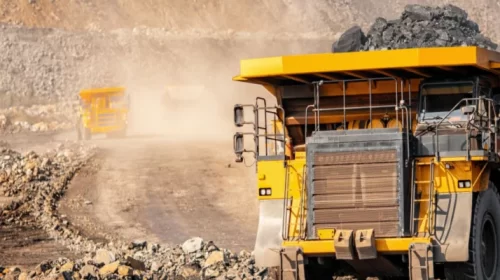Why miners can be first movers in the hydrogen economy
Scarcely a day goes by without seeing a new headline about the (re)emergence of hydrogen, specifically the production of “green” hydrogen from renewable energy sources. National governments continue to announce funding of hydrogen-related initiatives; new technologies are being released; hydrogen motor vehicle companies are being formed; steel mills are dabbling in replacing coal with hydrogen in steel production; and hydrogen-focused companies have seen hefty increases in share prices.
While perhaps not obvious to some, mining companies may have a unique role to play in accelerating the use of and benefitting from this sustainable energy source as an alternative to fossil fuels.
Since the 1970s, the hydrogen economy has been an enticing ideal for a carbon-free future. Instead of excess renewable energy being wasted or devoted to charging batteries, it could go toward powering electrolyzers that split water molecules into hydrogen and oxygen. The hydrogen (or potentially its ammonia cousin) is stored, transported via tanker or blended into natural gas pipelines, and ultimately consumed to generate power through fuel cells or gas power plants—with the waste product being clean water and not greenhouse gases. Hydrogen represents a far more compact store of energy by weight compared to batteries and fossil fuel, and hydrogen-based vehicles can refuel almost immediately.
However, hydrogen has posed numerous challenges to be universally adopted, namely:
- The requirement for widespread—and currently expensive—refueling and storage infrastructure, akin to petrol/gasoline stations spread throughout the community;
- Hydrogen vehicles, fuel cells and electrolyzers are unfamiliar to regular mechanics and will require specific expertise to service and repair;
- The relative high production cost and low “well-to-wheel” energy conversion compared to fossil fuels and batteries (albeit costs are declining rapidly);
- High costs of compression, storage and transport relative to fossil fuels; and
- Perceived safety concerns (the 1937 Hindenburg disaster often comes to people’s mind).
Fortunately, the mining industry, and the way in which mines are operated, can mitigate many of these challenges, making it a logical first mover in the space for the following reasons:
- Mine haulage fleets “return to base” to refuel at the same site at the end of every shift, thus benefitting from a centralized refueling infrastructure with a suitable economy of scale. These fleets require maximum utilization and, therefore, demand a rapid refueling speed that batteries currently cannot provide.
- With a mine’s mechanically standardized heavy vehicle fleet concentrated in one location, skilled maintenance expertise would be more focused and better utilized.
- Diesel fuel and electricity costs are often excessive at mine sites given their relative isolation. Retail prices for diesel in remote areas may exceed the national average price by more than 15 percent (see chart below). For some mine sites the numbers are even more stark: miners have indicated that diesel-generated electricity costs are as much as five times higher in remote territories than purchasing electricity from the grid in less remote locations.
- Miners are more incentivized to switch to renewable energy due to the higher power costs at their remote operations, and therefore by proxy—are better placed to produce green hydrogen by utilizing said renewable energy infrastructure.
- With mileage and bulk less of a concern for heavy vehicles, mine haulage trucks and transport vehicles are expected to utilize hydrogen storage tanks pressurized to a more conventional 350 bar, unlike light vehicles that would require more compact and complex tanks pressurized to 700 bar. This implies lower compression costs and less expensive storage systems.
- Mining companies are familiar with the safe storage and management of chemicals, reagents and compressed gases. Usually there is enough land area to safely store compressed gasses away from workers, infrastructure and local communities.
With hydrogen gaining momentum as an alternative to fossil fuel, mine sites may ultimately devote their renewable energy resources toward hydrogen production, which could become a sustainable revenue center. Mines can be located in areas of high solar or wind intensity and may even become surplus producers, continuing to generate hydrogen well after the mine’s resources have been exhausted and the mine has closed. The availability of port and gas pipeline infrastructure, which give a mining company access to other markets away from captive mining and processing operations, may also be a determinant in hydrogen’s feasibility at a mine.
Globally, corporations across all industries are now devoting considerable resources to reducing their carbon footprints, including cloud migrations that could cut carbon emissions by nearly 60 million tons per year. Likewise, mining companies are stepping up their own sustainability goals, and many see hydrogen as a valid, albeit less conventional, option to help achieve this aim.
While there are still enormous hurdles to overcome before the broader hydrogen economy takes hold, these hurdles are lower for mining than for most other industries. Mining companies have an opportunity to change public perception about their commitment to environmental stewardship and emerge as a spark that ignites the global hydrogen economy.
Authors Sean Keenan and David Burns are both senior experts from Accenture.
![]()





